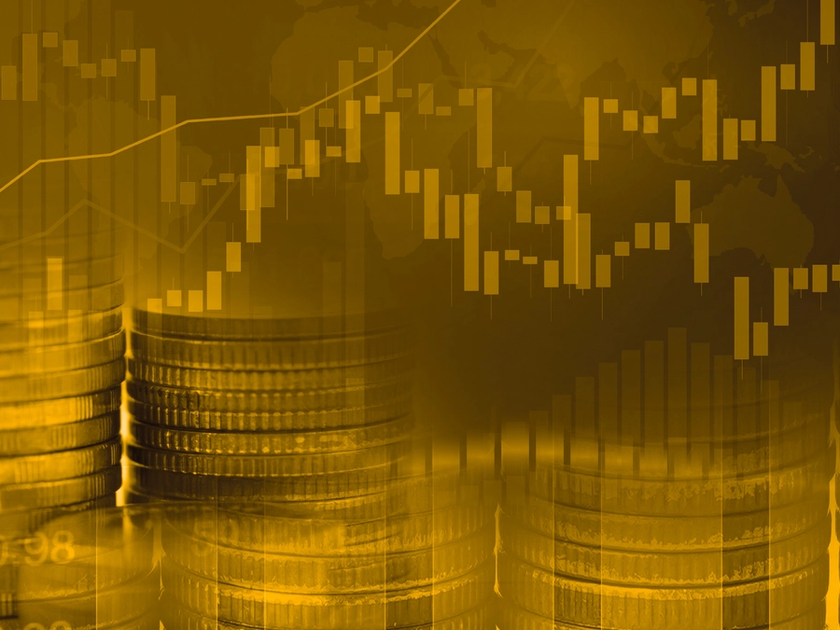What is cardano?
Cardano (ADA) is a cryptocurrency. It’s one of the largest and most popular cryptocurrencies measured on market value, which in July 2022 was about 110 billion DKK, according to Coinbase. Contrary to other popular cryptocurrencies - such as bitcoin and ethereum - cardano is based on a different technology and validation method.
The core of any cryptocurrency is their blockchain . The blockchains that bitcoin and ethereum use are driven by the method “proof-of-work”.
Some say that proof-of-stake is a more scalable and future-proof method than proof-of-work. Even ethereum has said that they’re making the change to proof-of-stake in August 2022. If you want to understand the technical background for the future of the crypto-world, cardano is a great place to start.
Table of contents:
- What’s the idea behind cardano?
- Scalability
- Explanation on proof-of-work
- Explanation on proof-of-stake
- Smart contracts, decentralised apps, crypto games, and NFTs
- Smart contracts
- Decentralised apps
- Crypto games
- NFTs
- The cardano story: Who created cardano?
- How to get started trading cardano
What’s the idea behind cardano?
Cardano’s vision is to create a scalable blockchain that supports the development of smart contracts, decentralised apps, crypto games, and other crypto-based projects.
If you’re not sure what a blockchain is, you can read more here .
Scalability
One of the biggest challenges that the earliest cryptocurrencies - such as bitcoin and ethereum - has run into, is the issue of scalability.
Because they use the method, proof-of-work, it’s practically impossible to scale their blockchain technology. This is because proof-of-work limits their blockchains to only being able to complete a low amount of transactions per second.
Bitcoin can complete about five transactions per second, and ethereum can complete around 30. In comparison, the payment processing business, Visa, can handle about 1,700 transactions per second. In a world where cryptocurrencies have to be serious competitors to Visa, for example, it’s necessary to be able to handle more transactions per second. Otherwise, the users will run into long wait-times when they’re paying for their items in a store.
But why is it that bitcoin and ethereum only are able to handle that few transactions per second?
This is due to the method, proof-of-work.
Explanation on proof-of-work
Before transactions can be added to a blockchain, they need to be validated with a hash-code. The code is unknown and the only way to find it is by guessing.
The reward for guessing correctly is a payout of the blockchain’s coin – such as bitcoin.
Naturally, some people are very motivated to get this reward.
Only one person can guess correctly and get rewarded. That’s why there’s also a race to be the first person to make the correct guess.
Besides that, bitcoin is – much like gold – a limited resource. The developers behind bitcoin have set a cap on the amount of bitcoins that can be in circulation, which means that there can only be mined 21 million bitcoins in total – ever.
So, for every new bitcoin being mined – which is the same as saying that for every new block of transactions added to the blockchain – it would get harder to find the next. Just like it only gets harder and harder to find gold in line with gold diggers using up the earth’s resources.
In the same way, crypto mining becomes harder and harder, and the amount of resources which are used to mine are getting larger and larger. That’s why it takes so long to complete transactions.
That issue is what proof-of-stake has to solve, which is the method that cardano uses.
Explanation on proof-of-stake
With proof-of-stake, the validation works differently. Every participant in the network is also participating in a type of lottery draw to see who gets to be responsible for finding the next code. In that way there won’t be thousands of different computers trying to crack the same code. Here, there’s just one person/computer per block, which makes proof-of-stake less energy-intensive than proof-of-work.
“Stake” stands for a stake in the draw. The more stakes you have, the bigger are your chances of winning the draw. Stakes are based on how many coins or tokens you have. When a person gets selected to validate a transaction, they will charge a fee – a gas fee – for their trouble.
So it’s the ability to charge gas fees that motivates participants to enter the draw. Should a person try to trick the system with a faulty code, their stakes will be removed.
If Jake for example should try to trick the cardano blockchain with a corrupt hash code, the network would sooner or later be able to see that their data doesn’t match. Here, Jake’s stake will be taken from him, and he would lose his money.
For Jake to successfully hack the system he needs to – besides being randomly selected by the staking mechanism – trick the majority of the network with his hash code.
The hash code actually just covers all transactions made in the blockchain, since the last block was added. All transactions are being registered in the blockchain’s ledger, which all participants of the network are able to see.
So, when Jake forwards his block of transactions to the rest of the network, they will quickly notice that there’s a transaction that doesn’t match the information in the ledger. Which is why they will deny the block, and Jake will pay the price - ‘losing’ the amount of crypto he chose to stake.
Smart contracts, decentralised apps, crypto games, and NFTs
Bitcoin paved the way for many of the world’s most popular cryptocurrencies . What bitcoin could do was to use blockchain technology to create a decentralised payment system.
Since the invention of bitcoin, developers have had their eyes opened to the many opportunities that a blockchain offers. Because it’s not just payment systems that can be decentralised.
The same goes for contracts, apps, and online gaming. That’s something that ethereum , among others, found out early on, but that cardano also focuses on.
Smart contracts
Smart contracts are decentralised contracts between two parties, who’d like to trade with one another.
Today, most trades are being facilitated by some type of middle man. When you buy a house, the bank, state, and an attorney are all involved – and they all get a piece of the pie in the form of fees, commissions, and taxes.
When you buy a car, the dealer, the state and the attorney are all involved again.
Basically, all binding contracts today are facilitated by someone – and that’s exactly what makes them binding. Because if the bank, state, or an attorney weren’t able to vouch for the contract’s contents, who then should make sure that people actually held up their part of the deal?
Example:
If you’re selling your car to Peter, all the centralised intermediators make sure that you’re actually getting the amount of money that you should. If Peter tries to trick you, you can report him to the police. Here, the intermediators have documentation that Peter has broken his contract, and you can prosecute him.
Smart contracts: Imagine if you will, that it wasn’t the bank, the state or the attorney who vouched for the contract, but was instead a piece of code linked to a blockchain.
That’s the whole point of smart contracts.
The code for a smart contract between Nate and Peter could look like this:
Car = 100,000 DKK If Nate receives 100,000 DKK, then the registration certificate will be transferred automatically to Peter.
Like that, a smart contract is a line of requirements that need to be met. If the requirements aren’t met, the contract is void and the trade will not be completed.
Where with a centralised trade, you would need to trust the intermediator, you need to trust the code when it comes to smart contracts. And that’s also one of the main points of blockchain technology: You don’t need to trust central authorities, but instead you need to trust technology.
Another derived effect is also the fact that smart contracts generally cost less to operate than it does to pay a banker, a government official, a used car dealer, and an attorney.
Decentralised apps
Decentralised apps (also known as dApps) are just like regular apps, but instead of being connected to one central computer, the app is spread across an entire network of computers via the blockchain.
For instance, when you use your Twitter app, the technology is centrally stored at Twitter. That gives Twitter 100% control over the platform, and if they want to ban a person from using the platform, such as what happened with Donald Trump, they are free to do so.
If Twitter were a decentralised app, it wouldn’t be possible to ban Donald Trump from the platform – unless the majority of the blockchain network agreed upon that. Like that, you could say that decentralised apps are democratic, since it’s the network that has autonomy of the platform.
Crypto games
Today, games are also typically connected to a single central computer. If you were to buy an extra feature in a game – such as a skin – it’s technically still under the game’s copyright after the purchase. You can’t take your skin “out of the game”, and you typically won’t be able to resell it. So you’ve basically paid money for something that you don’t actually have any ownership of, because the game is connected to a single central computer that’s owned by the manufacturer.
With crypto games, the idea is that the game is distributed to several people via a blockchain. The game isn’t owned centrally in a single place, but is instead a common project existing on every single computer that participates in the network.
That also means that any purchased features in the game can be owned by the people who actually bought them.
An example of a popular crypto game is Axie Infinity . The gameplay is similar to Pokémon, where you need to catch different characters, which can then be trained and used to battle other players.
Each character – or “Axies” – are digital items that the player has full ownership of. Axies can thus also be sold on an online marketplace to other players, who are interested in owning that particular character.
NFTs
NFTs are “digital barcodes”, which secures ownership of assets. An asset could for example be a digital artwork from the collection Bored Ape Yacht Club .
Let’s say you own an artwork. How could we trust that? The digital barcode secures that the image file you have on your computer is the original file. There won’t be any doubt, because the barcode is embedded in the blockchain, which is controlled and verified by a large network of participants.
So it’s not only you that can prove the copyright and ownership. So can everyone else in the network.
With ‘regular’ artwork, such as the Mona Lisa, it’s practically impossible to prove that the version on display at the Louvre actually is the real deal. With a digital barcode – or NFT – it would be easy to prove.
The cardano story: Who created cardano?
Cardano was founded in 2015, and in 201, the first version of the project was rolled out. Behind the invention is Charles Hoskinson, who also helped found ethereum. Hoskinson left ethereum because he wanted to attract external investors, whereas Vitalik Buterin , the founder of ethereum, would rather keep the project 100% non-profit.
That resulted in Hoskinson leaving ethereum to create the company IOHK, whose primary work consists of developing the cardano blockchain.
Cardano has its name from the Italian mathematician Gerolamo Cardano, who is also known as one of the most influential mathematicians during the renaissance.
How to get started trading cardano
With Lunar Block , it’s easy to get started trading cardano. All you have to do is download the Lunar app, and sign up to Lunar Block.
You need to take a test in connection to the sign up, where we will ask you questions about the risks of cryptocurrency . You can get to know the risks better in the app, before you take the test. Once you’ve been approved, you can trade crypto immediately.
Get started with cardano
- 1
Download Lunar for free
Go to App Store or Google Play and download the Lunar app. Find your photo ID, as you need that to sign up.
- 2
Sign up to Lunar Block in the app
Find Lunar Block under “Products” and sign up. You’ll be asked to take a test about crypto first - among others things, it’s to see if you’re aware of the risks. You can learn more about the risks in the app before you take the test.
- 3
Buy cardano with a single swipe
When we’ve approved you, you can buy cardano immediately. Choose your cryptocurrency in the app and buy with a single swipe.
Cryptocurrencies can rise and fall
When you trade cryptocurrencies, you need to be aware that it carries a large risk. The value of your cryptocurrency can both rise and fall, and you can risk losing the entire amount you’ve invested in cryptocurrencies.
Cryptocurrency trading is done through Lunar Block. Lunar Block is not regulated by the Danish Financial Supervisory Authority (Finanstilsynet). That means you won’t have the same protection as when trading e.g. stocks or other regulated assets.
We do not counsel
We do not advise on currencies and do not make recommendations for either buying or selling. We can provide factual information about the different currencies, but past price developments are not an indication of future developments.
No information from Lunar Block should therefore be considered as recommendations and all decisions are up to you alone.
Last updated April 18, 2023. We’ve collected general information. Please note, that there may be specific circumstances that you and your business need to be aware of.
You might also like...
Where can I pay with solana?
Cryptocurrency is becoming so widespread and acknowledged abroad that you can use the currency just like regular payment methods on some...
How do you buy solana as regular stocks?
Because solana (SOL) is a currency, and not a business, you can’t actually invest directly in solana like it’s a stock.
Are cryptocurrencies a good investment?
Cryptocurrencies can be a great addition to your portfolio - if you’re willing to run the risk. Cryptocurrencies are “high risk - high...
What is bitcoin?
Bitcoin is a digital currency, or cryptocurrency, as it’s also called. Bitcoin is the first and largest cryptocurrency measured on market...


